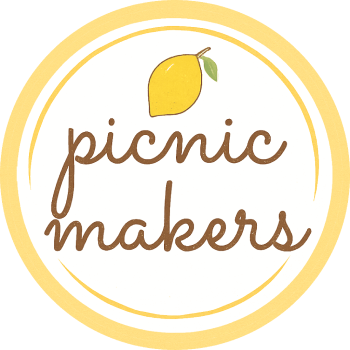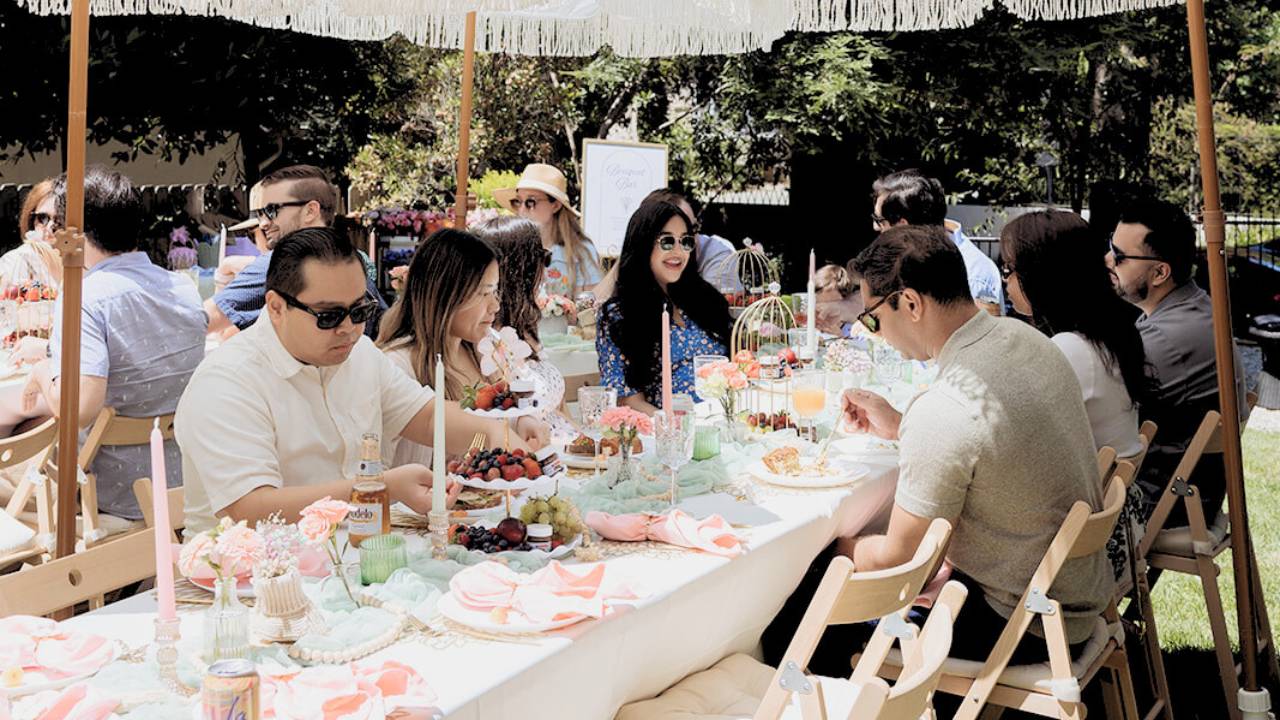Key Takeaways:
- Replace stiff mixers with guided activities like seated picnics or conversation menus to make talking feel natural and less awkward.
- Choose active formats like walking discussions or speed mentoring to keep energy high and stop cliques from forming in large groups.
- Prioritize deep connections over collecting business cards to boost engagement and help people grow their careers.
We all have stood in a beige hotel ballroom while staring at a name tag on a stranger’s lapel. You ask what they do, and they ask what you do. You exchange cards. You never speak again.
That is the old way.
When we talk about fun networking event ideas in a modern context, we mean moving beyond the stiff mixer. We mean creating environments where people actually want to talk to each other.
These events matter. They are the engine for professional growth and team connection. New opportunities do not come from handing out business cards; they come from real conversations. Culture and engagement thrive when people feel safe enough to drop the “corporate mask” and just be humans working together.
This article shares practical, experience-based formats we have seen work. We will also cover planning tips to make them happen. Many of the same principles behind fun group activities for adults also apply to well-designed networking events.
Quick Links:
- Fun Networking Event Ideas For Real Connections
- 1. Curated Conversation Picnics
- 2. The Sunset Swap Lounge
- 3. The Connection Lab
- 4. Story Swap Studio
- 5. Idea Tasting Flight
- 6. Topic Trails Walk & Talk
- 7. Mentor Carousel
- 8. Collaboration Challenge Jam
- Business Networking Event Ideas By Group Type
- Fun Networking Activities And Games
- How To Organize A Networking Event
- Fun Networking Event Ideas That Keep People Coming Back
- FAQs
What Is a Networking Event?
- A networking event is a structured gathering where professionals meet to build relationships, exchange information, and explore new career or business opportunities. It can happen in an office, conference, or informal setting and often includes guided activities or prompts to make starting conversations easier. Well-designed networking events focus on meaningful connections rather than just swapping business cards.
Fun Networking Event Ideas For Connections 🎉
We compiled this list after watching too many talented people stand awkwardly in corners. These are our core fun networking event ideas designed to make conversations feel natural. These are creative networking event ideas you can adapt. They work for ten people or a hundred. They work in parks, offices, or rented venues.
Quick Fact:
- Statistics show that roughly 80% of professionals find networking essential to career success. Even more telling, almost 100% say face-to-face meetings build stronger long-term relationships. Better professional relationships lead to career advancement. Stronger engagement leads to better retention.
1. Curated Conversation Picnics 🧺
Imagine walking into a networking event and seeing low luxury picnic tables, plush cushions, and soft blankets on the grass. You are not standing awkwardly with a plate. You are sitting comfortably with a small group of 4–6 people in a “conversation pod.”

Copyright © Photo by Picnic Makers
This is the power of the Curated Conversation Picnic.
We style the décor to feel inviting. Then, we place a “Conversation Menu” at every table. It has sections just like a food menu. Start with “Appetizers” (light starter questions), move to “Main Courses” (Deep Dives about career or passion), and end with “Dessert” (Wildcard fun facts). An MC or host cues the room when it is time to switch courses.
Why it works: Small pods reduce the pressure to “work the room.” Shared food and cozy seating make networking activities for professionals feel relaxed. It is easy to run networking ideas for small groups or scale up with twenty pods for a large crowd.
Pro Tip:
- Survey your attendees a week before the event to ask for their “burning questions.” Incorporate the top three submissions into your printed Conversation Menus. This guarantees the topics are actually relevant to the room.
This format fits perfectly for team off-sites, client appreciation events, or internal mixers. It is exactly the kind of experience a professional luxury picnic team can design and execute for you.
For more inspiration on styling and layouts, explore our company picnic ideas that can easily be adapted into networking-friendly setups.
2. The Sunset Swap Lounge 🌅
Sometimes you need flow. The Sunset Swap Lounge is a relaxed setup—think rooftop, patio, or park—divided into zones. Each zone is labeled by topic: New Ideas, Big Mistakes, Dream Projects, or Industry Trends.
The mechanic is simple. People rotate zones on a gentle timer. You spend 15 minutes in “Big Mistakes” sharing a lesson learned, then the bell rings, and you move to “Dream Projects” to meet a whole new set of faces.
Why it works: These are perfect networking ideas for large groups where you want movement and variety. It breaks up cliques. It works exceptionally well for cross-team or multi-company events where people don’t know each other yet.
Pro Tip:
- In a loud outdoor setting, a bell might not be heard. Use visual cues instead—like switching the color of LED uplights or having the DJ play a specific “transition song”—to signal that it is time to move to the next zone.
This format is one of the easiest networking activities for large groups when you want a constant flow.
If you’re already planning a larger celebration, you can layer the Sunset Swap Lounge concept onto your existing corporate party ideas.
3. The Connection Lab 🔬
This format treats networking like a science experiment. We set up 4–5 “lab stations” around the room. Each station has a short, specific prompt or activity.

Copyright © Photo by Picnic Makers
One station might be “Brag About Someone Else,” where you have to tell a partner about a colleague’s win. Another could be the “60-Second Collaboration Pitch,” where you brainstorm a fake product together.
Groups rotate through stations on a timer.
Why it works: It is highly interactive. It is one of the best business networking event ideas for innovation-minded teams because it forces immediate cooperation. It helps people practice talking about their work in a low-pressure way.
Think of these stations as structured networking games for events that encourage collaboration instead of awkward small talk.
4. Story Swap Studio 📖
We strip away the job titles for this one. Participants pair up or form trios. They are given themed prompts that focus on narrative rather than resume stats.
Prompts might include: “A risk I’m glad I took,” “The worst advice I ever received,” or “A project that changed my mind.”
Why it works: This focuses on storytelling as the glue for connection. It is one of the most effective networking event ideas for young professionals, who may feel intimidated by traditional networking or lack a long resume. It helps people see each other as humans, not just LinkedIn profiles.
Pro Tip:
- To truly strip away the hierarchy, redesign your name tags for this session. Remove job titles and company names entirely. Replace them with a conversation starter line, such as “Ask me about my side hustle” or “I’m currently reading…”
5. Idea Tasting Flight 💡
Borrow the concept of a wine tasting. Instead of Pinot Noir or Chardonnay, the “tasting stations” are centered around topics like the Future of the Industry, AI, Sustainability, or Remote Work Culture.

Copyright © Photo by Picnic Makers
Small groups gather at a station. They discuss the topic for ten minutes. Before rotating, each attendee notes one takeaway and one person they want to follow up with.
Why it works: It creates immediate common ground. It is great for meetups with a thought-leadership angle. This is one of the most adaptable conference networking ideas because it slides naturally into a session break or evening mixer.
6. Topic Trails Walk & Talk 🚶
Sitting still can kill energy. The Topic Trails Walk & Talk gets people moving. We map out a walking route—outdoors in a park or indoors through a conference center.
The route has stops. At each stop, pairs or trios switch partners. The physical movement keeps the blood flowing and the energy up.
Why it works: Movement breaks cliques naturally. It is ideal for campuses, parks, or large venues. One of the simplest networking activities for large groups is to get people walking instead of standing around tables.
If you’re working with compact teams, pair this with more focused team-building activities for small groups earlier in the day.
7. Mentor Carousel 🎡
This is speed dating for career growth. We place senior mentors at fixed tables. Each table has a theme: Leadership, Startups, Creative Careers, or Negotiation.
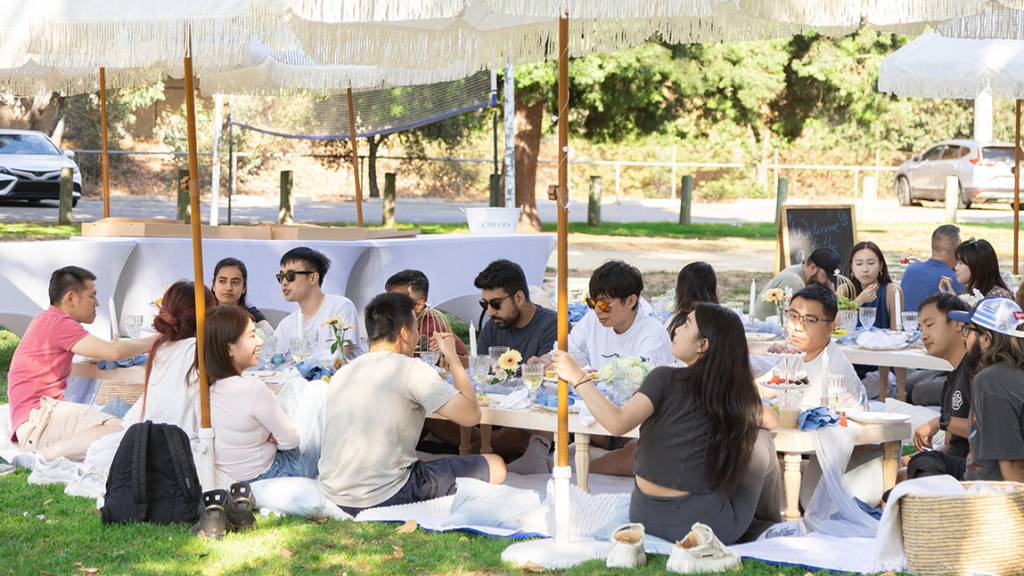
Copyright © Photo by Picnic Makers
Attendees rotate to a new table every 8–10 minutes. The emphasis is on specific questions like “What’s one mistake to avoid in your field?” rather than a general bio.
Why it works: It is great for career development, leadership programs, and alumni events. These are strong networking activities for professionals who want depth, not just chit-chat.
Pro Tip:
- Mentors get nervous, too. Provide your mentors with a “Cheat Sheet” of three personal anecdotes they can share (e.g., “My biggest failure,” “My first boss”) to help them fill the silence if a group is shy.
8. Collaboration Challenge Jam 🤝
Give people a job to do, and they will bond faster than if you just gave them a drink. We divide the room into small mixed teams. They receive a short creative brief.
Examples: “Design a product for 2050,” “Pitch a new holiday,” or “Write a team manifesto.”
They have 30–40 minutes to create something, then they share it with the room.
Why it works: It feels like a workshop combined with a mixer. It creates a shared victory (or funny failure) instantly. It sits firmly in creative networking event ideas territory. One of the most energizing networking event ideas is when you want people to actually build something together.
Business Networking Event Ideas By Group Type 💼
Not every format works for every crowd. We mapped the eight core formats above to specific group types so you can choose the right business networking event ideas for your audience.
For Young Professionals 🌱
Recommend: Story Swap Studio, Connection Lab, Curated Conversation Picnics.
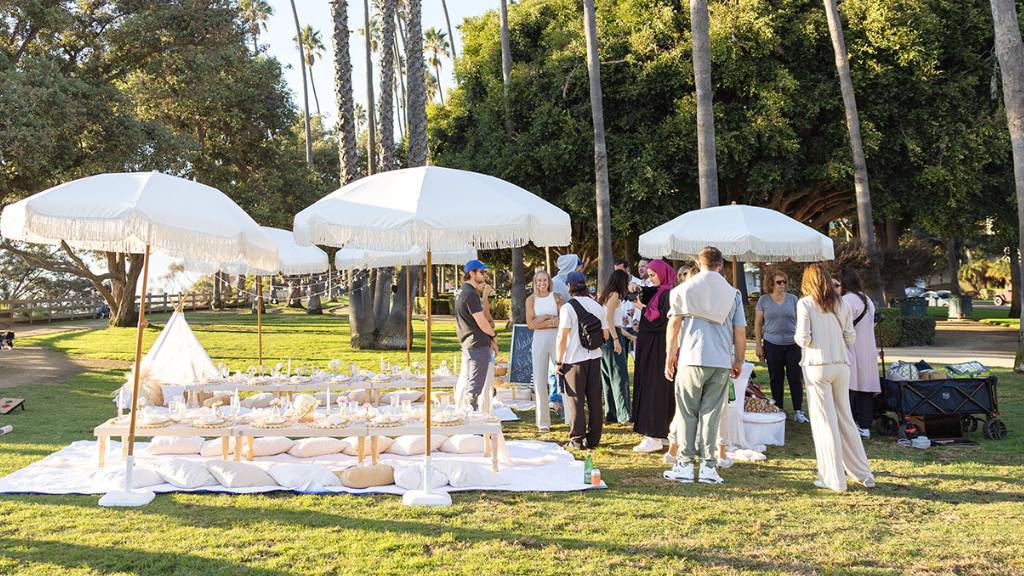
Copyright © Photo by Picnic Makers
These formats focus on confidence-building. They prioritize peer connections and mentorship over status. They work well for networking event ideas for young professionals because they level the playing field.
For Small Groups 👪
Recommend: Curated Conversation Picnics, Idea Tasting Flight, Collaboration Challenge Jam (in mini-teams).
Small groups need intimacy. These formats allow for deeper conversations and prevent the awkward silence that can happen in small crowds. They are solid networking ideas for small groups.
For Large Groups 👥
Recommend: Sunset Swap Lounge, Topic Trails Walk & Talk, Connection Lab (with multiple stations).

Copyright © Photo by Picnic Makers
Large groups need flow. You want to avoid bottlenecks. These networking ideas for large groups keep people moving and ensure everyone meets multiple new faces.
Conference Networking Ideas 🎤
Recommend: Idea Tasting Flight, Topic Trails, Mentor Carousel.
Conferences are exhausting. These formats plug into breaks, evenings, or side sessions without demanding too much mental load. They are proven conference networking ideas.
For Hybrid Teams 💻
Recommend: Virtual Conversation Menus (breakout rooms), Short Idea Tastings (shared docs), Virtual Mentor Carousels.
You can adapt these. Use breakout rooms for the “tables.” Use chat prompts for the “menu.” These virtual networking event ideas keep remote teams connected. Use virtual conference networking ideas like timed rotations to keep energy high. Networking ideas for virtual events just need stricter time-boxing to succeed.
For even more structures to plug into your calendars, see our networking event ideas guide.
Fun Networking Activities And Games 🎲
Sometimes you just need an icebreaker. You can layer quick, fun networking activities onto the main formats we listed above.
We aren’t talking about “trust falls.” We mean simple add-ons.
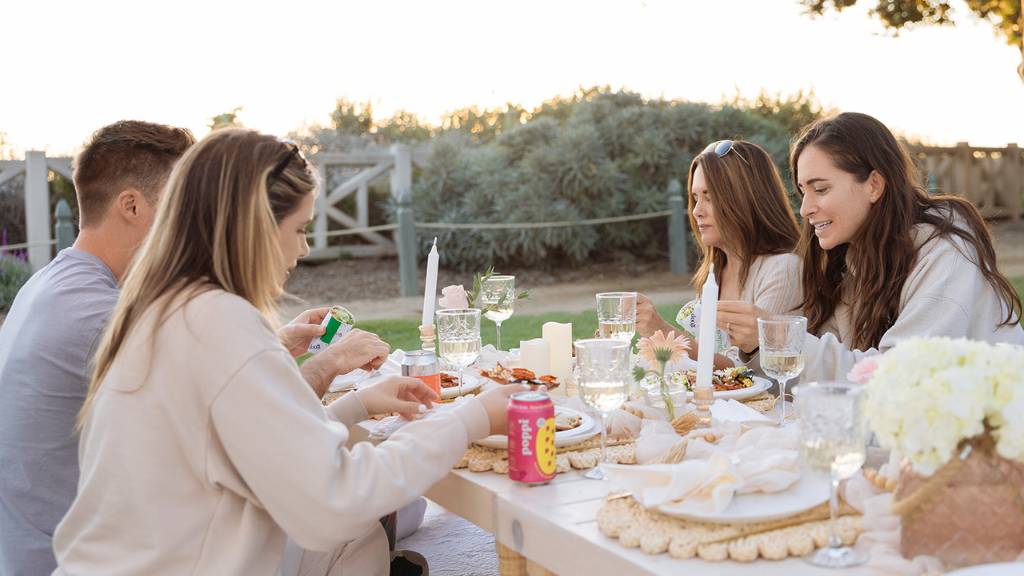
Copyright © Photo by Picnic Makers
Try “Two Truths and a Twist” at your picnic tables. Run a quick “Connection Bingo” where squares are filled with skills (“Knows Python,” “Has lived abroad”). Run a short rotation of fun networking games right before the main session starts to warm up the room.
Use these games at the start of an event to break tension, during energy dips, or at a post-session mixer. Remember, these are networking activities for professionals. They should be light but respectful. They can easily be tailored as networking activities for large groups, too.
If you want an extra incentive to mingle, pair these games with simple prizes inspired by our raffle ideas for work.
How To Organize A Networking Event 📋
Great events don’t happen by accident. Here is a simple overview of how to organize a networking event that actually delivers.
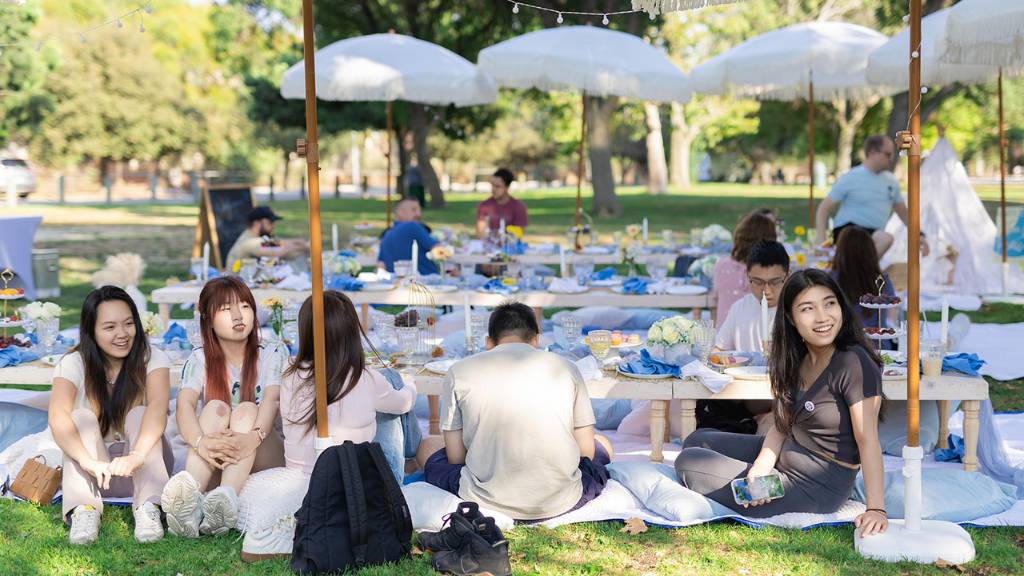
Copyright © Photo by Picnic Makers
- Clarify the Goal: Are you hiring? Building client loyalty? fostering internal collaboration? The goal dictates the format.
- Choose the Right Format: Pick one from the list above. Don’t try to do everything.
- Decide on Logistics: Group size, timing, and flow are critical.
- Design the Space: Seating matters. Lighting matters. Create zones.
- Prepare the Content: Write your Conversation Menus. Print the prompts. Set up the games.
- Plan Follow-up: How will people stay in touch? A LinkedIn corner? A recap email?
Networking Event Tips:
- Always have a host or facilitator to guide the flow. Make intros easy with legible badges or color-coding by team. Consider accessibility and dietary needs. Always offer an introvert-friendly option, like a quiet zone.
For a deeper step-by-step, pair these networking-specific ideas with our corporate event planning checklist.
Keep People Coming Back 🤝
The best fun networking event ideas should be thoughtfully designed rather than thrown together. You don’t have to overhaul your entire calendar overnight. Start small. Pick one format. Run a pilot event. See how your team responds.
The benefits are real. You will see stronger relationships. You will see more engaged teams. You will see better collaboration. If you are planning in-person experiences in Southern California, explore our team-building ideas in Los Angeles for even more ways to bring people together.
We can help you turn these business networking event ideas into reality. Whether it is a styled picnic or an outdoor lounge, we handle the décor, layout, and flow. You just focus on the conversations.
FAQs
How do you make a networking event fun instead of awkward?
The secret is design. Awkwardness happens when people don’t know what to do or say. You fix this by giving them a structure. Use formats like Curated Conversation Picnics or the Connection Lab. These provide a clear “menu” of interactions. A warm host helps immensely. They bridge the gaps. Also, create comfortable spaces. Standing in an empty room is hard; sitting on a cushion or at a topic station is easy. Follow these networking event tips, and the awkwardness disappears.
What are the best networking activities for large groups?
For large crowds, you need movement. The Sunset Swap Lounge is excellent because it rotates people automatically. The Topic Trails Walk & Talk works because it physically moves the group through space. The Connection Lab works if you have multiple duplicate stations. The key to networking activities for large groups is clear timing. Use a bell or music cue to signal rotations. Keep instructions simple and visible on screens or posters.
How do you choose networking event ideas for young professionals?
Young professionals often seek mentorship and peer connection rather than just “business leads.” Choose formats that build confidence. The Story Swap Studio is great because everyone has a story, regardless of rank. The Mentor Carousel provides high value by connecting them with senior leaders. Curated Conversation Picnics are also strong networking event ideas for young professionals because the vibe is low-pressure and social.
What are some networking ideas for virtual events and conferences?
Virtual events need to be active. Passive listening kills connection. Use virtual networking event ideas like Conversation Menus inside breakout rooms. Run short Idea Tasting sessions using shared documents where people can type and talk simultaneously. Virtual Mentor Carousels work well with pre-assigned breakout shifts. Use tools like chat prompts and polls. Keep sessions shorter than live ones. These networking ideas for virtual events and virtual conference networking ideas keep people engaged without Zoom fatigue.
